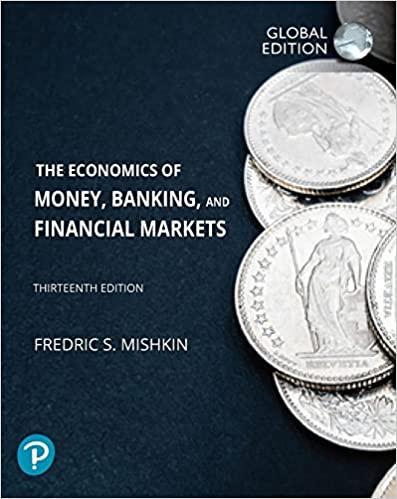Question
1. Consider a 3-asset portfolio worth $100M with the following 10-day return variance-covariance matrix stock 1 stock 2 stock 3 stock 1 0.00183 -0.00050 -0.00084
1. Consider a 3-asset portfolio worth $100M with the following 10-day return variance-covariance matrix
| stock 1 | stock 2 | stock 3 | |
| stock 1 | 0.00183 | -0.00050 | -0.00084 |
| stock 2 | -0.00050 | 0.00112 | 0.00103 |
| stock 3 | -0.00084 | 0.00103 | 0.00311 |
and its corresponding correlation matrix
| stock 1 | stock 2 | stock 3 | |
| stock 1 | 1 | -0.35 | -0.35 |
| stock 2 | -0.35 | 1 | 0.55 |
| stock 3 | -0.35 | 0.55 | 1 |
Assuming return normality
a) What is the 100-day 99% relative value at risk (VaR) assuming the following weights:
Stock 1: -40% Stock 2: 25% Stock 3: 115% i.e w=[-0.4, 0.25, 1.15].
b) Interpret your VaR estimate in part a).
c) What is the VaR diversification benefit for the portfolio in part a)?
d) Recalculate the 100-day VaR and the VaR diversification benefit if the weight vector is changed to w=[0.5, 0.25, 0.25].
e) Explain how and why the change in weights in part d) has affected the VaR and the diversification benefit.
Now assume normality is unreasonable due to the presence of fat tails in the return distributions
f) For a given weight vector, outline how monte-carlo simulation can be used to calculate the 100- day VaR at 99% in the presence of fat tails.
g) Is the simulated VaR in part f) likely to be larger or smaller than the estimates assuming return normality? Why/why not?
Step by Step Solution
There are 3 Steps involved in it
Step: 1

Get Instant Access to Expert-Tailored Solutions
See step-by-step solutions with expert insights and AI powered tools for academic success
Step: 2

Step: 3

Ace Your Homework with AI
Get the answers you need in no time with our AI-driven, step-by-step assistance
Get Started


